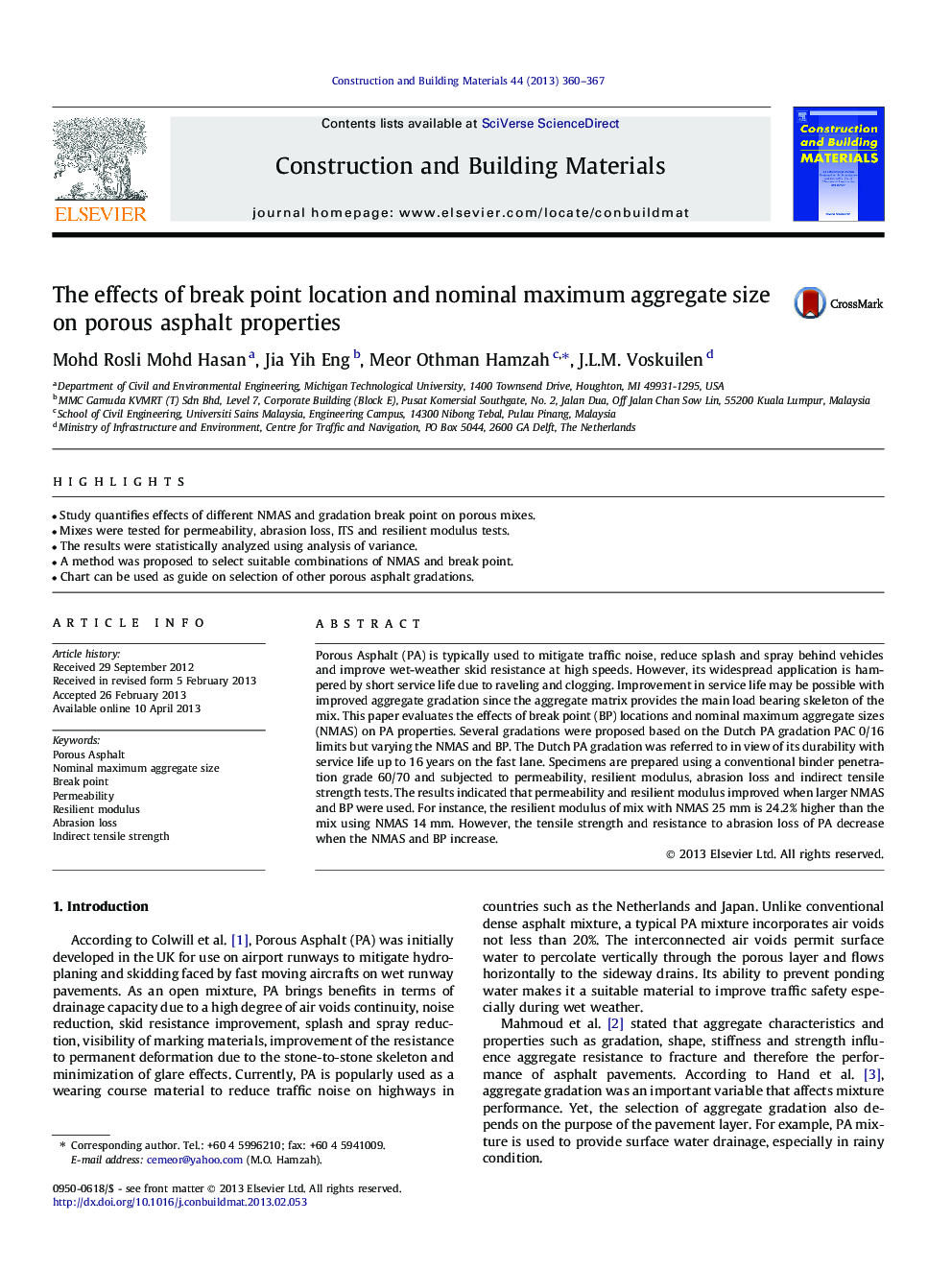| کد مقاله | کد نشریه | سال انتشار | مقاله انگلیسی | نسخه تمام متن |
|---|---|---|---|---|
| 258076 | 503611 | 2013 | 8 صفحه PDF | دانلود رایگان |

• Study quantifies effects of different NMAS and gradation break point on porous mixes.
• Mixes were tested for permeability, abrasion loss, ITS and resilient modulus tests.
• The results were statistically analyzed using analysis of variance.
• A method was proposed to select suitable combinations of NMAS and break point.
• Chart can be used as guide on selection of other porous asphalt gradations.
Porous Asphalt (PA) is typically used to mitigate traffic noise, reduce splash and spray behind vehicles and improve wet-weather skid resistance at high speeds. However, its widespread application is hampered by short service life due to raveling and clogging. Improvement in service life may be possible with improved aggregate gradation since the aggregate matrix provides the main load bearing skeleton of the mix. This paper evaluates the effects of break point (BP) locations and nominal maximum aggregate sizes (NMAS) on PA properties. Several gradations were proposed based on the Dutch PA gradation PAC 0/16 limits but varying the NMAS and BP. The Dutch PA gradation was referred to in view of its durability with service life up to 16 years on the fast lane. Specimens are prepared using a conventional binder penetration grade 60/70 and subjected to permeability, resilient modulus, abrasion loss and indirect tensile strength tests. The results indicated that permeability and resilient modulus improved when larger NMAS and BP were used. For instance, the resilient modulus of mix with NMAS 25 mm is 24.2% higher than the mix using NMAS 14 mm. However, the tensile strength and resistance to abrasion loss of PA decrease when the NMAS and BP increase.
Journal: Construction and Building Materials - Volume 44, July 2013, Pages 360–367